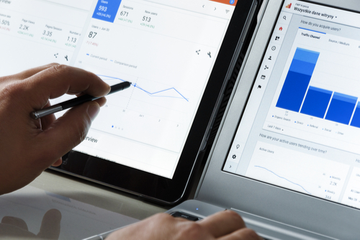
According[1] to Forrester, digital spend is set to top $150 billion by 2023 and account for 35 percent of total ad spend.
And this means CMOs will spend more than ever before on paid search, banner and outstream video ads, instream video ads, and email marketing to attract those buyers who start their journey online.
However, adopting a “more is more” attitude toward digital ad spend isn’t always necessarily a good thing. Spending wisely means spending less to generate more, and keyword traffic forecasting is one of a CMO’s best resources to allocate marketing spend across the most useful tactics. Here’s how traffic forecasting could mean smarter ad spend.
Content produced in collaboration with Investis Digital.[2]
What is traffic forecasting?
Traffic forecasting is the implementation of automated tools to help a brand predict which content will resonate with target audiences at a given time by aligning content with user intent. Traffic forecasting can help brands predict how keywords will perform[3], which can help marketers gauge competitor performance, intelligently allocate budgets, and identify the best opportunities to generate results across marketing channels.
Accurate traffic forecasting can also make search a more powerful channel to support multiple functions in an organization.
Here are three examples of traffic forecasting in action:
- CMOs can understand how much time and effort they will need to increase awareness for new products, services, and campaigns.
- CROs can plan future revenue models around search, comparing it with other digital channels to determine which tactics they need to drive short-term and long-term growth.
- Product marketers can use traffic forecasting to see market share and demand insights when

